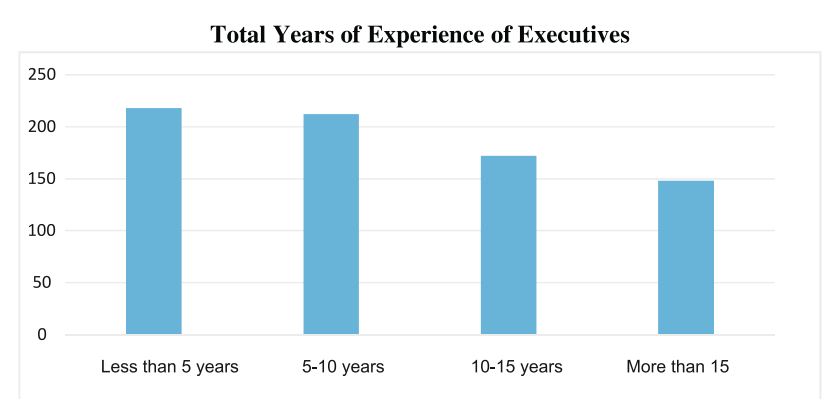A Study on Effect of Organizational Climate on Employee Perception, Job Satisfaction and Organizational Outcomes
##plugins.themes.academic_pro.article.main##
Abstract
The theoretical framework on organizational climate, employee perceptions and job satisfaction, and employee engagement has been continuously studied by scholars and researchers. The varied outcomes of studies lead us to inconclusive understanding about the possible relationships and associations between organizational climate, employee perceptions and performance, employee job satisfaction and organizational outcomes. While some scholars argue that there is a linear relationship between them, others find a curvilinear association. Again while there is a consensus that employee perceptions (about organizational climate) positively correlate with job satisfaction and organizational commitment, there are differences of opinion among researchers about the constituent factors or attributes of'organizational climate' and determinants of'climate strength.' The present paper aims at understanding about how do employees perceive the organizational climate and its impact on their motivation, performance, job satisfaction and retention. The findings narrate that the constituent factors of organizational climate are mostly 'non-physical' elements and its strength may be determined by the degree of attractiveness of those elements.
##plugins.themes.academic_pro.article.details##
References
- Ahuja, M.K. (2002). Women in the information technology profession: A literature review, synthesis and research agenda.. European Journal of Information Systems,11 (1), 20-34.
- Budhwar, R S. & Boyne, G. (2004). Human resource management in the Indian public and private sectors: an empirical comparison. International Journal of Human Resource Management,15(2),346-370.
- Buono, A.F. & Bowditch, J.L. (1989). The human side of mergers and acquisitions: Managing collisions between people, culture and organizations. Washington DC: Beard Books.
- Dawson, J.E. &Gonza'lez-Roma' V., Davis A. & West, M. A. (2008). Organizational climate and climate strength in UK hospitals. European Journal of Workand Organizational Psychology,17 (1), 89-111.
- Bliese, P. D. & Halverson, R. R. (1998). Group consensus and psychological well-being: A large field study. Journal of Applied Social Psychology,28 (7), 563-580.
- Gonzalez-Roma, V., & West, M. A. (2005). Agreeing to disagree: Team climate, climate strength and innovation in work teams. [See Richa C., Santosh R. & Mukesh K. B. Organizational climate, climate strength and work engagement .Procedia-Social and Behavioural Sciences,133 (2014), 291 -303].
- Gonzalez-Roma, V., Peiro, J. M., & Tordera, N. (2002). An examination of the antecedents and moderator influences of climate strength. Journal of Applied Psychology,87(3), 465-473.
- Kopelman, R. E., Brief, A. P., & Guzzo, R.A. (1990). The role of climate and culture in productivity. In Benjamin Schneider (Ed.), Organizational climate and culture, San Francisco: Jossey-Bas Publishers, 282-318.
- Lindell,M.K., & Brandt, C. J. (2000). Climate quality and climate consensus as mediators of the relationship between organizational antecedents and outcomes. Journal of Applied Psychology,85(3), 331-48.
- Mischel, W. (1973). Toward a cognitive social learning reconceptualization of personality. Psychological Review, 80(4), 252-83.
- Mishra, P., Dhar, U., & Dhar, S. (1999). Job satisfaction as a correlate of HRD climate: An empirical study. Indian Journal of Training & Development,29(2), 5.
- Pugh, S.D. & Dietz, J. (2008). Employee engagement at the organizational level of analysis. Industrial and Organizational Psychology,1(1), 44-47.
- Purang, P. (2008). Dimensions of HRD climate enhancing organizational commitment in Indian organizations. Indian Journal of Industrial Relations,43(4), 528-546.
- Rao, T.V. & Abraham, E. (1986). HRD climate in Indian organizations. In T.V. Rao (Ed.), Readings in HRD. New Delhi: Oxford &IBH.
- Rohmetra, N. (1998). Towards creating a learning organization: The HRD climate focus. Paradigm,2(1), 56-63.
- Schaufeli, W.B. & Bakker, A.B. (2003). UWES - Utrecht work engagement scale: Test manual. Unpublished manuscript, Department of Psychology, Utrecht University.
- Schneider, B., Salvaggio, A. N. & Subirats, M. (2002). Climate strength: A new direction for climate research. Journal of Applied Psychology,87(2),220-229.
- Van Vianen, A.E.M., De Pater I.E., Bechtoldt, M.N. & Evers, A. (2011). The strength and quality of climate perceptions. Journal of Managerial Psychology,26(1), 77-92.

